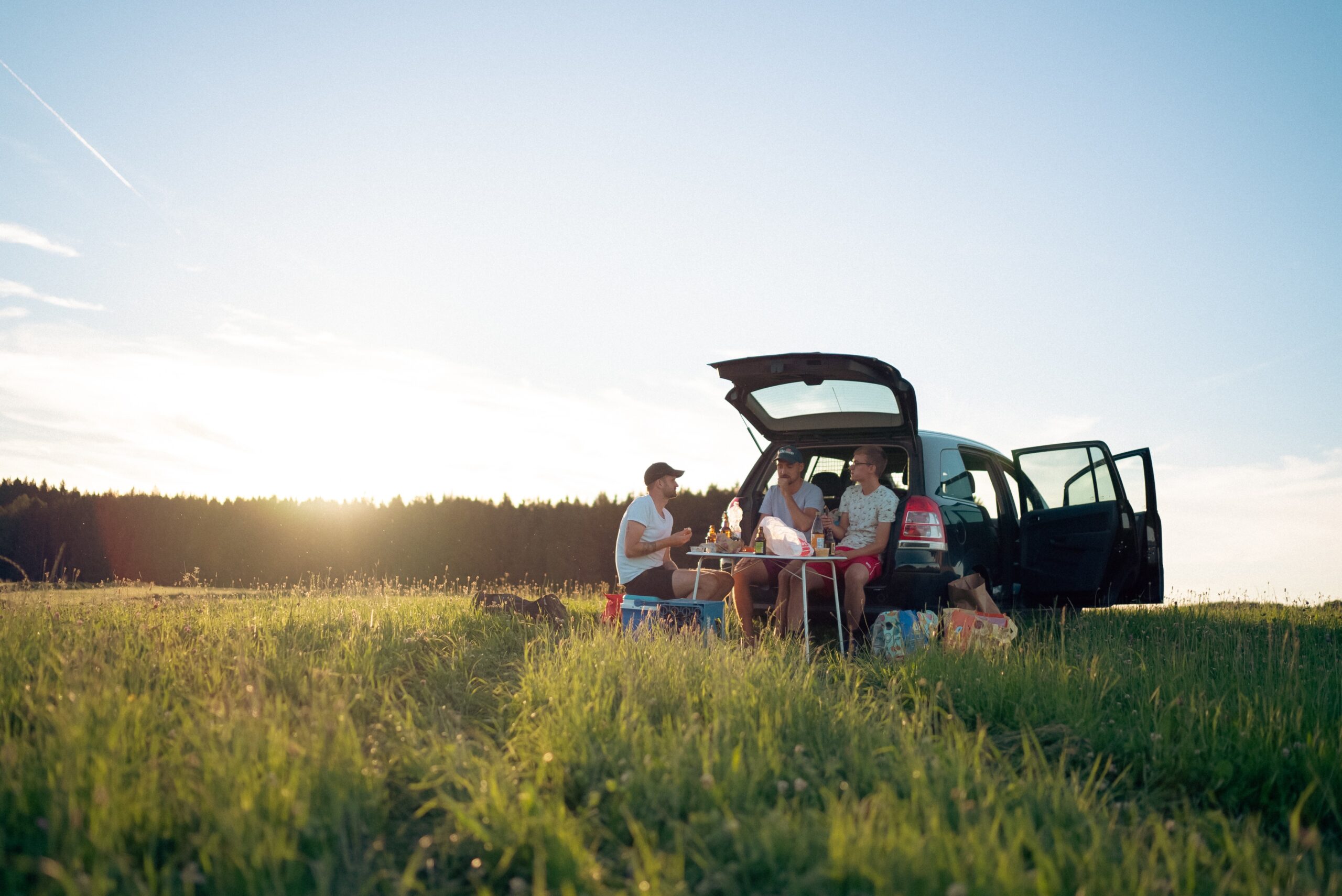Practice Eco-Friendly Overlanding with These 7 Tips

We want to keep exploring nature. Let’s work just as hard to preserve it as we do to enjoy it.
There are a lot of misconceptions out there about the relationship between the overlanding community and the environment. In this article, we’re going to try to break those down. Have you ever met an overlander who would chuck granola bar wrappers out their window on a trail and say, “Eh, whatever. Who cares about the environment anyway?” No? Exactly. We haven’t either. Just because we need large vehicles to get to the places we want to explore, that doesn’t mean we don’t care about preserving those beautiful places. Eco-friendly overlanding is as simple as that: just showing care for and stewardship of the places we’re exploring.
1/ Be aware of what you can be doing to decrease your truck’s environmental impact.
2/ Tread Lightly.
3/ Cook over a wood fire.
4/ Compost and pack out trash.
5/ Reduce, reuse, recycle.
6/ When you buy new products, buy stuff that lasts.
7/ Use the internet to your advantage
1/ Be aware of what you can be doing to decrease your truck’s environmental impact.

Photo by Alexandra Bakhareva from pexels.com
This includes keeping it regularly maintained and as fuel-efficient as you can. We get that you can’t (and, honestly, don’t want to) bring a Prius off-roading. And we get that all-electric overland vehicles are hard to come by, and expensive to boot. All we’re saying is that being conscious of your off-road vehicle’s emissions is the first step to being a more eco-friendly overlander.
2/ Tread Lightly.

Photo supplied by Trasharoo.
Pack out your trash everywhere you go, and pick up others if you’re able. There’s no such thing as being petty and leaving someone else’s mess when it comes to keeping the Earth clean. Leave every camp spot and trail better than you found it. A Trasharoo or other trash bag that you can incorporate into or onto your vehicle is a great easy solution for trash management. If you’re looking for inspiration or are just looking to learn more, Tread Lightly! has a ton of great resources for eco-friendly overlanding.
3/ Cook over a wood fire (when fire restrictions allow).

Photo by Vlad Bagacian from pexels.com
It takes more time and is absolutely more labor-intensive, but its environmental impacts are overwhlemingly positive. (Except if you live or camp in an area where fires can cause harm! Make sure you check fire restrictions on the Forest Service website before hitting the trail.) When you burn gasoline, kersosene, propane, butane, or even charcoal, the chemical breakdown releases more carbon dioxide (CO2) into the atmosphere that wouldn’t have been otherwise instroduced. On the other hand, burning wood doesn’t change the amount of CO2 because wood is already part of the carbon cycle. Technically, burning wood doesn’t release any more CO2 into the air than it would if than same piece of wood just rotten on a forest floor somewhere.
4/ Compost and pack out trash.

Photo by Lisa Fotios from pexels.com
When you’re packing out your trash, take the extra minute to separate out recyclables and food waste for your compost bin. Keep in mind that tin cans and other trash are NOT ok to burn, and that stuff like banana peels can take up to two years to biodegrade if you just chuck it into the woods.
5/ Reduce, reuse, recycle.

Photo by Uriel Mont from pexels.com
Guys, this isn’t third grade. We know you know this. But it’s really worth repeating. Bring your reusable water bottle on your hikes. Wear thrifted or secondhand hiking clothes. You know you’re going to stain and rip them anyway. Borrow gear and find as much used stuff as you can. A little extra love never hurt. Eco-friendly overlanding starts before you even hit the trail, so the more you can do this, the better.
6/ When you buy new products, buy stuff that lasts.

Photo supplied by Buck Knives.
Yeah, there’s always going to be a cheaper option out there. But buying locally, shopping small, and adopting an investment mindset are all going to help you be a more eco-friendly overlander. Not only are you playing a critical role in the development of your local economy, but you’re also making your own life easier. Think about your old Buck knife. You’ve had that thing forever. Actually, without even realizing it, you’re being an eco warrior. That Christmas present from middle school that still hasn’t given up on you is saving space in a landfill – and, you haven’t bought another knife since, so you’re keeping your purchasing frequency low.
7/ Use the internet to your advantage.
Photo by Bryon Dorr from Tread Archive
You can join Facebook groups and overlanding forums that share eco-friendly overlanding tips and sell secondhand gear. They’ll help you travel smarter, too. In these forums, overlanders share tips that’ll help you stop wasting time and gas idling around and start getting to the adventure. There are even forums specific to vehicles, like this one for Rivians, that give advice about exact make and model rigs. Plus, you can check out some of our favorite apps for overlanding that’ll help you find the best destinations.



